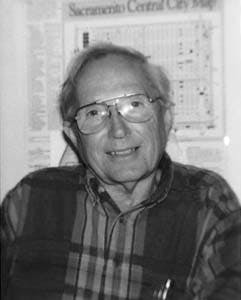ENERGY-STARVED ARMENIA HAS PROMISING GEOLOGY BUT BIG TRANSPORT CHALLENGES
John R. Wheaton
Mariposa Petroleum Co.
Sacramento, Calif.
Roland J. Bain, G. Dale Gray, Arsen A. Shahnazarian, Herbert E. Wheeler
Consultants
Sacramento
Identified geological prospects in the Republic of Armenia are large enough to contain possible reserves of 6 billion bbl of oil and 6 tcf of natural gas. The question is whether these resources will ever be developed.
Lacking capital, and with no means of exporting the oil and gas to generate capital, the Armenian government's alternatives are limited.
This article presents the circumstances in which Armenia finds itself, the steps taken to date in the process of developing the country's oil and gas resources-including results of a study of the size of those resources-and a possible solution to the dilemma.
GAS CURTAILED
In September 1991, Armenia broke away from the U.S.S.R. and became one of the New Independent States. Under the Communist centralized planning system, Armenia had been designated by the central party as a heavy industry region. The natural gas to fuel production was supplied through pipelines that traverse Azerbaijan and Georgia from producing fields in Turkmenistan and Russia.
Political events since Armenia's independence have curtailed those supplies of gas. Strife that has always existed between Christian Armenia and Muslim Azerbaijan turned into open conflict over the Armenian-controlled Nagorno-Karabakh region of Azerbaijan. As a result, Azerbaijan cut off gas supplies bound for Armenia.
In Georgia, bordering on the north of Armenia, terrorist uprisings have continually disrupted rail lines and pipelines passing through the country en route to Armenia. As a result of these developments, Armenia by late 1991 had lost nearly all of its natural gas supplies.
There has been no relief from Armenia's westerly neighbor, Turkey, as the two countries have been antagonists for centuries. No pipelines link Armenia with Iran which lies to the south, although Iran has indicated a willingness to supply natural gas on its terms through a pipeline to be financed by Armenia.
Armenia thus has been almost without energy for 4 years, getting by on minimum volumes of fuels entering the country by pipeline and rail and on hydroelectric power. Gas-fueled electric power plants have been running at a fraction of capacity. Factories are idle, and homes go without electricity and hot water. Winter conditions are severe.
Armenia is a landlocked country, an important and negative factor for development of its oil and gas resources (Fig. 1) (106075 bytes). It lies in the Caucasus Mountain region and occupies 11,490 sq miles.
EARLY ACTIVITY
Despite the oil and gas discoveries that have occurred in surrounding Azerbaijan, Iran, Turkey, and Georgia, Armenia has never produced liquid hydrocarbons. When it was part of the U.S.S.R., the country underwent two phases of exploration, the first covering 1947-74.
From 1947 to 1953, a systematic study of Ararat basin geology, combined with a gravity and surface magnetic survey, was conducted. Drilling started in the mid-1950s.
Electric surveys in the Ararat basin, Near-Araks basin, and the Hrazdan area were undertaken during 1961-68. The earliest seismic data were acquired in the 1960s, with nearly 1,000 km of data being shot. The level of technology and equipment limitations make most of the data of limited exploration use.
In 1966, additional gravity data were acquired in those areas identified as having exploration potential. Included in these campaigns were the Octemberian and Near-Araks basins. Wells were drilled and the data combined for an integrated interpretation in 1974. Soviet planners decided that the oil and gas exploration targets identified from this phase of exploration did not yield opportunities that compared with other areas in the U.S.S.R., which had relatively low exploration risk and were close to existing production infrastructure. Thus the first phase of Armenian exploration ceased.
The second phase of exploration started in 1981 as a result of discoveries such as the Samgori field in Georgia (1974) and the Maradkhanly field in the southern portion of the Kura basin in Azerbaijan (1971). The Ashtarak geophysical expedition was formed as a joint venture effort between the Armenian Ministry of Natural Resources and Westoil Geophysical in Gomel, Belarus.
During 1981-90, the expedition acquired and processed 2,256 km of common depth point (CDP) seismic data. The data were interpreted by geophysicists in Gomel and the final reports sent to Armenia.
During this period, a total of 53 "deep" wells and several dozen structural wells were drilled in Armenia. Although many of the wells yielded significant oil and gas shows, no production resulted from the drilling.
Beginning in 1983, three wells were drilled to 15,000 ft. A well drilled on the Shorakhbiur anticline had significant oil shows. Another well drilled on the Octemberian anticline had significant natural gas shows. The third well was drilled on the Bagravan anticline and showed no indications of hydrocarbons. There has been no drilling in Armenia since the drilling of these wells was completed in 1985.
There were numerous drilling problems and a lack of adequate drilling equipment and expertise. Problems included lost circulation and serious vibration problems during drilling, Drill bit and rig failures were numerous.
Wells of 3,000 ft depth would take 1 year to drill, and wells of 7,500 ft depth would take 2 years or longer to drill. Drilling operations in deeper holes would span periods of up to 5 years. Damage to well bores resulting from such long drilling times might have contributed to the lack of exploratory success.
It has been stated that there never was a diligent effort on the part of the Soviets to solve the drilling problems as the central Soviet government wished to know whether there were resources in the region but did not want the provinces to have their own established energy supplies, which might have weakened central control.
WORK SINCE INDEPENDENCE
When Armenia became an independent country in 1991 it was not known whether the region possessed commercially viable hydrocarbon resources which were undeveloped due to a lack of technical drilling expertise or whether it was barren of such resources. To seek answers, the government sought help from the U.S. Trade and Development Agency.
The agency provided funds for a contract administered by the California Energy Commission's Export Technology Energy Program, both of which assist U.S. companies in procuring business outside the U.S. MPC Inc., the consulting arm of Mariposa Petroleum Co., won the contract to evaluate potential for hydrocarbon development in Armenia and to recommend how the country could organize for its oil and gas efforts.
From interviews and the analysis of geological, geophysical, and well data available in Yerevan, the contract team evaluated basins and the prospects within these basins, which had been generated previously by Armenian geologists. The MPC team produced two reports: An Overview of the Potential for the Development of Oil and Natural Gas Resources in the Republic of Armenia and Country and Business Profile of Armenia, both available from the Energy Technology Export Program, California Energy Commission.
Because Armenia has no established production of oil or gas, no information is available on reservoir performance relative to prospective zones. All estimates of reserves are based on volumetric calculations of geological forms identified by the Armenians. Information on physical characteristics such as porosity, saturation, pressure, temperature, gas gravity, oil gravity, and quality were obtained from core analyses, test results, and log calculations where available and from discussions with Armenian technical personnel.
The information was scarce, in some cases not completely reliable, and in many cases nonexistent. Therefore, reasonable assumptions were made by extrapolating information from wells of similar age and formation type in nearby areas including wells in Azerbaijan, Georgia, and Turkey. Certain parameters of measurement, including porosity and permeability, could be obtained in Armenia.
The reserves of oil are put forth in the report as oil in place. No attempt was made to predict recovery percentages of primary or possibly secondary and tertiary recovery techniques. Associated gas in oil reservoirs is based on a gas-oil ratio of 500 cu ft/bbl. Reserves of gas reservoirs are stated as recoverable gas, estimated on the basis of an average recovery factor of 70%.
The estimated oil and gas reserve figures presented are considered possible reserves and present the amount of oil and gas that could be present. None of the reserve estimates can be considered known or proven reserves. However, the widespread indications of oil and gas in Armenia lend credibility to the expectations that commercial supplies can be developed.
Reserves thus estimated for Armenia are 6.37 billion bbl of oil in place and 6.193 tcf of recoverable natural gas.
A LOOK AT GEOLOGY
The territory that makes up Armenia is a segment of the Lesser Caucasus Mountains, which reach from the Black Sea southeasterly to the Caspian Sea. The attendant geologic manifestations in Armenia are represented by a very complex tectonic (Alpine) framework.
One result of this geological faulting and folding is the segmentation of the republic into compartments. This basic structure provides the foundation for major trapping mechanisms.
Presently, the west-central part of Armenia holds the greatest promise in view of the abundance of hydrocarbon indications and the significant amount of subsurface information covering this region. Two basins in particular appear to contain the requisites for large-scale accumulations of oil and gas: the Octemberian and Near-Yerevan basins. A third area with hydrocarbon potential is the Near-Araks basin (Fig. 2) (202972 bytes) and (Table 1) (20247 bytes).
Following are brief descriptions of the prospective areas:
- Octemberian basin. This 25 by 20 mile subbasin within the regional Ararat Depression (which lies principally in Turkey) occupies a geographic position along the Araks River in the most west-central part of Armenia. MPC's report offers varying degrees of subsurface detail on eight identified geological prospects. Volumetrics were calculated for five of the prospects.
A prospect designated the Octemberian Prospect is the most promising area of interest. A thick section of Oligocene and Eocene sandstone and limestone beds furnishes a multiple-objective setting for natural gas. Gas has been recovered in one form or another from most of the 11 holes drilled on a substantial, faulted anticline (Fig. 3) (175180 bytes).
Flow rates ranging up to 1.6 MMcfd (1.589 MMcfd recorded from Octemberian Well 13-P) have been measured from these wells. Equipment failures and an inordinate number of hole problems, coupled with the unpredictable Soviet system, precluded attempts to establish production. Among the hole problems reported were lost circulation difficulties in shallow fractured volcanics. An attractive aspect of the prospect is the relatively shallow depth. A 7,500 ft hole will test current primary objectives.
MPC estimates that the Octemberian Prospect is of adequate dimensions to hold over 160 bcf of recoverable gas. The area across this basin is broad and primarily flat. Access to and through this region should be of little difficulty for seismic and drilling crews and equipment. The Octemberian Prospect is scheduled for a state-of-the-art seismic evaluation during 1995.
- Near-Yerevan basin. The Near-Yerevan basin is one of several lesser basins that make up the important Central Depression. The capital city of Yerevan is within this basin, in which there have been impressive signs of oil.
MPC analyzed five prospective areas within this basin and singled out a locale 5 miles to the east of Yerevan, designated the Shorakhbiur Prospect, as having impressive potential.
A drillpipe rise of 7,400 ft of 32 gravity oil during an open-hole test at 11,500 ft on the south flank of a prominent anticline is the centerpiece of this prospect (Fig. 4) (107465 bytes). The well, 1 Shorakhbiur, was drilled to a total depth of 15,000 ft. The drilling of the hole spanned a period of close to 5 years, during which time a series of mishaps and mechanical failures plagued the operation, leading to the hole's abandonment in 1985. The prospect was in line for additional drilling; however, the break-up of the U.S.S.R. sidelined all operations.
The MPC team has concluded that a 12,500 ft hole positioned a short distance updip from the 1 Shorakhbiur will evaluate the oil objectives within the thick assemblages of Oligocene and Eocene sandstones and limestones. The delineated closure could accommodate a volume approximating 970 million bbl of oil and 500 bcf of gas.
As in the case of the Octemberian Prospect, the Shorakhbiur area is scheduled for seismic evaluation during 1995.
- Near-Araks basin. The Near-Araks subbasin within the Ararat Depression is located to the east of the Octemberian basin. Even though this basin is small in comparison with the other two basins discussed above, the opportunity for successfully uncovering commercial reserves of gas appears to be quite good. The well-bore evidence for gas at more than one site, coupled with a very favorable structural matrix, points to good prospect conditions in this area.
The seismically defined Mhchian Prospect measures approximately 6 miles by 6 miles. Within these confines, low flow rates of gas were recorded on tests of Paleocene carbonaceous sandstones near the 2,600 ft level in the 1 Mhchian well. An improved structural position over this well could locate producible natural gas.
PETROLEUM POLICY
Armenia's present petroleum policy has been stated as "to bring about the rapid evaluation and development of the country's hydrocarbon potential and the efficient and timely development thereof, if commercial quantities of hydrocarbons are discovered." However, neither the capital nor the drilling expertise needed for the execution of that policy are available within the country.
Options available to the Armenian government for development of the country's resources include:
- Seek a major exploration company or consortium of companies to develop the resources under a development agreement.
- Work with small entrepreneurial companies to perform exploration activities.
- Undertake on its own an operation to prove out prospects in the Octemberian and Shorakhbiur regions.
Options 2 and 3 have been attempted. With the assistance of expatriate Armenians, the government has been investigating transporting a drilling rig and crew from Greece to drill two exploratory wells. The rig would be shipped to a Georgian port on the Black Sea and transported by rail to Armenia. Well logging and other services would be flown into Armenia from France. Timing for such an operation is critical, as operating in winter is nearly impossible.
Estimates for the total cost of drilling these wells reached $16 million, an amount the Armenian government could undertake only with major outside financial assistance. The U.S. was approached to assist; however, even the transportation of the rig could not be underwritten by the U.S. government as the rig was not U.S.-owned.
The option of the government undertaking drilling operations on its own has not proven to be viable, although the government has pursued it vigorously as commitments have been made to the Armenian people that exploration would be undertaken in 1995. Although several entrepreneurial ventures have arisen to promote exploration in Armenia, none has progressed past negotiations with the government, which worries about the role it might have to play in the event of operational or financial failure.
Armenia could resolve the technical and financial problems facing the other options by offering participation in its exploration and production to international oil companies. A problem with this option so far has been insufficiency of reliable seismic coverage. The survey planned this summer will help in this area.
INVESTMENT CLIMATE
Armenia's legal environment is improving rapidly. Since independence, the republic has enacted many laws and programs aimed at making the country hospitable to investment.
The Armenian leadership is progressive and committed to establishing a market-driven economy. Important regulations governing investments, trade, taxation, and currency exchange are in place, although some await ratification.
Drawbacks to the investment climate include the country's being landlocked, strained relations with surrounding countries, and total dependence on foreign sources of energy. These do not make the environment any more hostile than those of other members of the former Soviet Union. A strong advantage for Armenia is the support it receives from Armenian communities around the world.
Armenia is moving rapidly to develop a framework in which the private sector can operate. The Property Law of 1991 was the first law to recognize private property, although the rights to engage in contracts have precedents dating back to the Civil Code of 1964.
The Law on Enterprises and Entrepreneurial Activity, passed by Parliament in 1992, provides a broad array of rights, including those to manage property, financial assets, and businesses. It also guarantees that enterprises will be free from excessive government intervention. These are basic tenets to the western mind but significant departures from Communist concepts.
The new Law on Foreign Investment contains provisions reflecting prevailing international practices and protects companies from arbitrary government actions. It includes compensation for losses stemming from nationalization or confiscation of property.
The Customs Department was established in 1992. Foreign companies engaged in oil exploration will be allowed to import needed materials and equipment duty-free. For example, drilling rigs, cement, casing, and other materials will enter Armenia free of taxes and duties. If such goods are sold in Armenia, the maximum duty presently applicable is 10%.
There are no customs problems in bringing in materials required for a job, although a company might meet resistance from other parts of the government for not using local material and equipment. This should not be a problem since it can be shown that few goods applicable to exploration and development are available within Armenia.
The Tax on Profits Law of 1992 establishes a tax structure that includes a value-added tax, excise taxes, corporate profit tax, and personal income tax. There is a 2 year corporate tax holiday for businesses established in Armenia, and significant other tax incentives can be negotiated for ventures that bring new capabilities to the country.
The banking system is structured to assist in repatriation of capital and earnings. Nevertheless, Armenia lacks a universally convertible currency. All conversions must take place through the Bank of Armenia. The bank has attempted to hold the conversion rate at 400 dram/$, but the country has no hard currency with which to effect stabilization. Currency convertibility will be a major obstacle in Armenia. The lack of hard currency to pay foreign companies for services could require alternative payment methods.
TERMS AND CONDITIONS
As part of the MPC study, a model production sharing agreement was proposed to the Armenian government. The intent was to keep the agreement simple, not to require the contractors to make a front-end payment as reserve quantities are unknown, to emphasize an early period of exploration and development, and to ensure that national demand gets priority from production.
The Ministry of Natural Resources owns Armenia's natural resources on behalf of the republic. The Armenian side of negotiations for a production sharing agreement are understood to involve some combination of the following: prime minister, state minister responsible for the natural resources, minister of natural resources, and minister of energy and fuels.
The government needs to define the entity that will monitor exploration and production operations once an agreement is signed. No such entity exists for this purpose in the present government.
As Armenia will not have hard currency with which to pay for the contractor's share of production, the contractor must have the means to trade or export its share. There is no pipeline to carry oil to a Black Sea port from Armenia.
The pipeline under consideration to carry Caspian Sea oil through Azerbaijan, across a southeastern part of Armenia, and on to Ceyhan, Turkey, could be a key to development of Armenia's hydrocarbon resources. As a transit condition, Armenia could negotiate shipment rights. The country's poor relations with Turkey raise doubts that this pipeline ever can be built.
Armenia's other energy options are limited. Negotiations for gas purchases from Iran are constrained by the lack of a pipeline and capital to build one. Restart of the old Medzamor nuclear plant is a possibility, although the U.S. has refused to help with financing. Development of coal reserves is an option under study, although it would require reconfiguration of the country's energy infrastructure.
A final alternative is purchase of Russian gas for shipment through Georgia now that Russia has reasserted itself in that region. This would make Armenia dependent again on Russia, an untenable outcome for the Armenian government.
The republic desperately needs energy and seems to have significant potential for oil and gas development. The question remains: Will it happen?
BIBLIOGRAPHY
MPC, "An Overview of the Potential for the Development of Oil and Natural Gas Resources in the Republic of Armenia", April 1994.
MPC, "Republic of Armenia Technical Support, Petroleum Exploration and Development Country Profile and Business Climate," March 1994.
Wheaton, J.R., trip notes dated November 1993 and May 1994.
THE AUTHORS
Copyright 1995 Oil & Gas Journal. All Rights Reserved.





